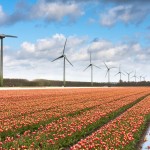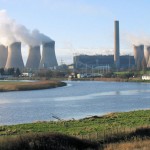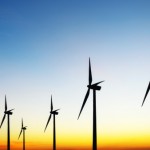 The Dutch government recently published its draft plans aimed at better managing the growth of onshore wind power in the country to the satisfaction of the Dutch Wind Energy Association (NWEA).
The Dutch government recently published its draft plans aimed at better managing the growth of onshore wind power in the country to the satisfaction of the Dutch Wind Energy Association (NWEA).
The plan sets out how at least 6,000 megawatts of onshore wind power can be installed in the Netherlands in the coming years. New installations are “crucial” if the country is to meet its 2020 renewable targets, according to the NWEA. The recently elected coalition government pledged earlier this year to source 16% of the country’s final energy consumption from renewables by 2020. This is a slight increase compared to the country’s 14% target under the EU renewables directive, but will mean a significant increase in the country’s wind power given that only 2.4 GM of energy are currently provided by wind.
For the past two years, differences of opinion between the Dutch government and the provinces over who has control of certain areas of land has stifled growth in the wind sector. An administrative agreement between the central and regional authorities at the start of the year, followed by plans setting out how land can be used for onshore turbines, means that projects that have been stalled can get back on track and “we can make up for lost time,” says Ton Hirdes, director at NWEA.
continue reading »

Thomas Becker, EWEA CEO.
Commenting on the call from BusinessEurope Director General Markus J Beyrer on EU energy policy, European Wind Energy Association CEO Thomas Becker had this to say;
It sounds a little old fashioned when BusinessEurope claims that fighting climate change is not compatible with cost-competitiveness and security of supply. What have they been doing for the last 15 years? What planet were they on?
The main problem of the energy situation today in Europe is the massive subsidies – still in 2013 – going to fossil fuels and nuclear.
If that was corrected and with a properly functioning electricity market there would be no discussion of what choice policy makers would make for the energy mix.
But even without such a correction, wind energy is already cheaper than nuclear, and in an increasing number of locations already cost competitive with new gas and coal.
continue reading »

Fiddlers Ferry power station, UK
Coal-fired power stations cost the European Union up to €42.8 billion a year in health costs associated with coal-fired power stations, a new report says.
The study — ‘The Unpaid Health Bill: How coal power plants make us sick’ — also found that EU-wide impacts amount to more than 18,200 premature deaths, about 8,500 new cases of chronic bronchitis, and over four million lost working days each year.
Published by the Health and Environment Alliance (HEAL), the study said the figures for mortality increase to 23,300 premature deaths, or 250,600 life years lost, while the total costs are up to €54.7 billion annually when emissions from coal power plants in Croatia, Serbia and Turkey are included.
The use of coal in power generation in Europe is on the rise again and that there are about 50 new coal power plants currently in the pipeline, said the study.
continue reading »

Fatih Birol, Opening Session, EWEA 2013 in Vienna.
By subsidising fossil fuels, governments are “stealing money from the pockets of the poor, who would get money otherwise for schools and hospitals”.
So says Fatih Birol, Chief Economist of the International Energy Agency, in the latest issue of Wind Directions.
Fossil fuels get over half a trillion US dollars – six times more than renewables, but 80% of this money goes to households with high and middle incomes, he says.
He adds that if renewable energy subsidies are used intelligently, “they can help kick-off renewables projects which would help us to reduce environmental problems and at the same time help to improve the energy security of countries and help to get jobs in the renewables sector.”
Read the full interview in Wind Directions
 Wind energy costs are falling and some companies involved in wind are seeing a rise in profits, according to evidence which has appeared in the world’s media this month.
Wind energy costs are falling and some companies involved in wind are seeing a rise in profits, according to evidence which has appeared in the world’s media this month.
In Europe, insurance firm Allianz was quoted by Reuters as saying last week that “renewable energy production and infrastructure are gaining investor appeal as they become less dependent on government support in more European markets”.
The firm invests heavily in renewable energy projects because they “offer attractive feed-in tariffs, are already at grid parity (competitive with conventional energy) or are going in that direction.” Spanish and Italian wind and solar installations are the “most advanced in terms of profitability while those in the Nordic countries, Britain, Germany, France and the Benelux would be catching up,” Armin Sandhoevel, Chief Investment Officer for renewables at Allianz, said.
continue reading »
 The Dutch government recently published its draft plans aimed at better managing the growth of onshore wind power in the country to the satisfaction of the Dutch Wind Energy Association (NWEA).
The Dutch government recently published its draft plans aimed at better managing the growth of onshore wind power in the country to the satisfaction of the Dutch Wind Energy Association (NWEA).









